White Sands, located in southern New Mexico, is one of the most unique U.S. national parks—in fact, it’s home to the largest gypsum dune field in the world! If you want to experience this otherworldly place for yourself, check out the Alkali Flat Trail, which provides jaw-dropping views of the stunningly white dunes and the surrounding San Andres Mountains. Here’s everything you need to know about the Alkali Flat Trail, the best hike in White Sands National Park.

White Sands protects an impressive 275 square miles of gypsum sand dunes in the Chihuahuan Desert.
Given how expansive and relatively featureless the dunes are, backcountry exploration is difficult—and, frankly, a bit dangerous—so most visitors stick to White Sands’ short and easy trails near its main road, the Playa, Dune Life and Interdune Boardwalk. For more adventurous travelers, however, the Alkali Flat Trail is one of the only longer hikes in the park that provides you a better opportunity to get deeper into the heart of White Sands.
About the Alkali Flat Trail
- Length: 5 miles
- Elevation: 450 feet
- Difficulty: Moderate
- Dog-friendly? Yes! Unlike most national parks, dogs are actually welcome here! Just make sure they stay on a leash and you pick up after them!
- Trail map
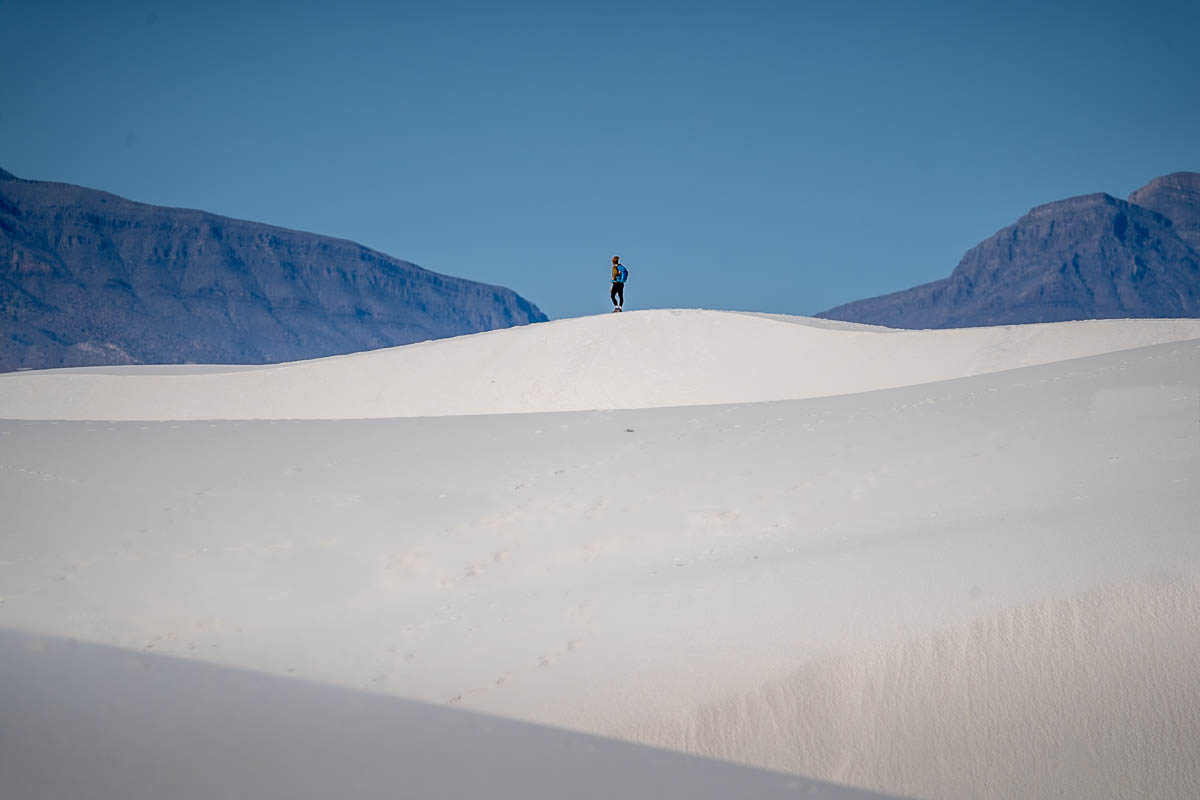
How to Get to the Alkali Flat Trail
The Alkali Flat Trail is located here, in White Sands National Park in southern New Mexico.
The closest airport is Las Cruces Airport, about 55 miles away, although you can likely find cheaper flights into El Paso Airport, about one hour and 45 minutes away. You’ll definitely need to rent a car if you plan on flying in—there’s no public transportation to or around White Sands.

An entrance pass to White Sands is $25 per private vehicle, which is good for up to seven days. Alternatively, if you plan on visiting multiple parks, I’d suggest picking up an America the Beautiful Pass, which, for $80, gets you into all of the U.S. National Parks and over 2,000 federally managed lands for free for an entire year!
The Alkali Flat trailhead is located a little over seven miles past the park’s entry, along Dunes Drive. This road is partially paved and partially made of hard-packed gypsum. All passenger vehicles should be fine making it down the road, but it can be a bit wash-boarded at times, so drive slowly and carefully!
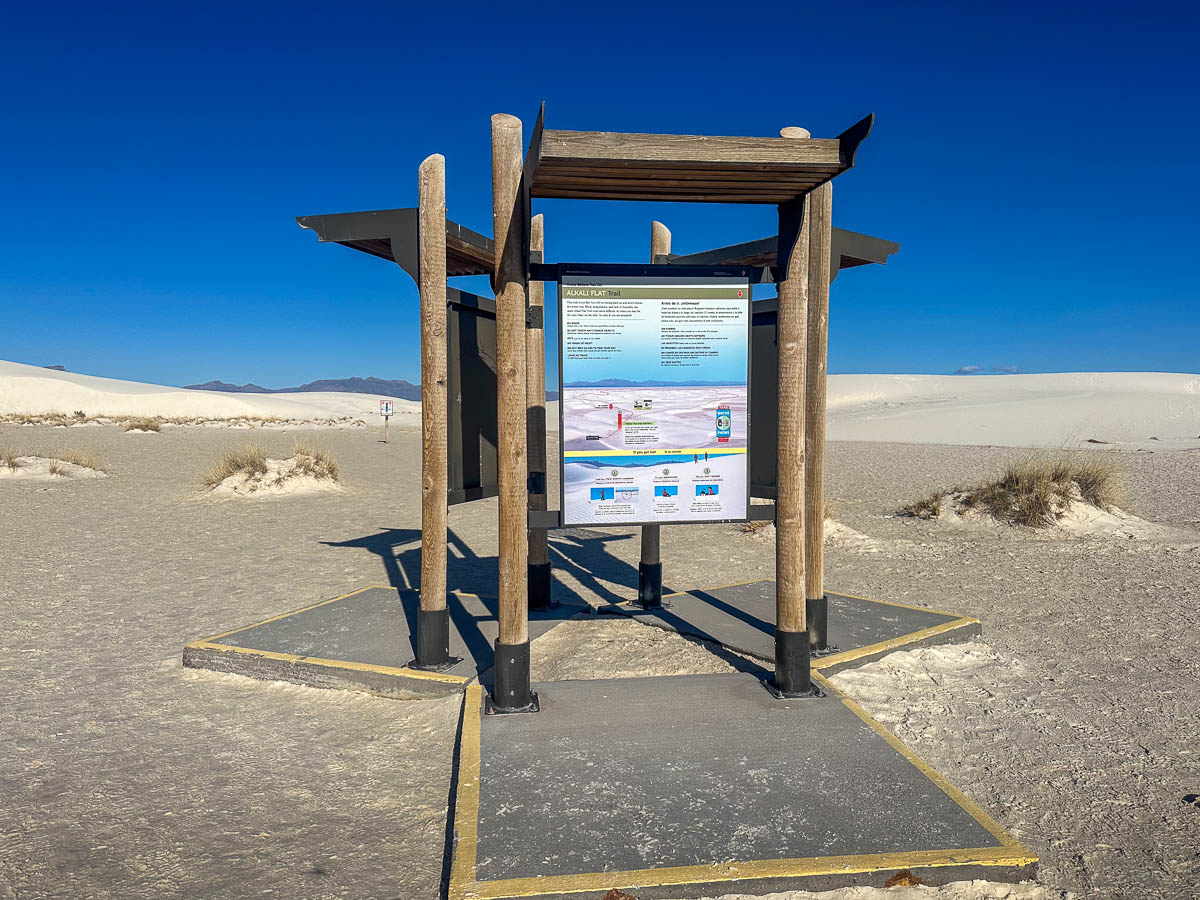
The parking lot for the trail is fairly large, so you shouldn’t have a problem finding a spot, regardless of what time you come.
It’s worth noting that the National Park is right by the White Sands Missile Range, which regularly conducts military tests. During these tests, the road into the National Park may be closed for up to three hours.
You can check whether there's a scheduled park closure here, but, even if there's not one scheduled, you may want to have some flexibility in your schedule in case you run into any closures.
What to Expect Along the Alkali Flat Trail
From the trailhead, the path departs from a hard-packed ground and quickly transitions to soft white sand. Almost immediately, you’ll start climbing up your first sand dune, with each step revealing better and better views of the San Andres Mountains in front of you.
One of the most unique things about the Alkali Flat is that, besides other hikers’ footprints, there’s no discernible pathway here.
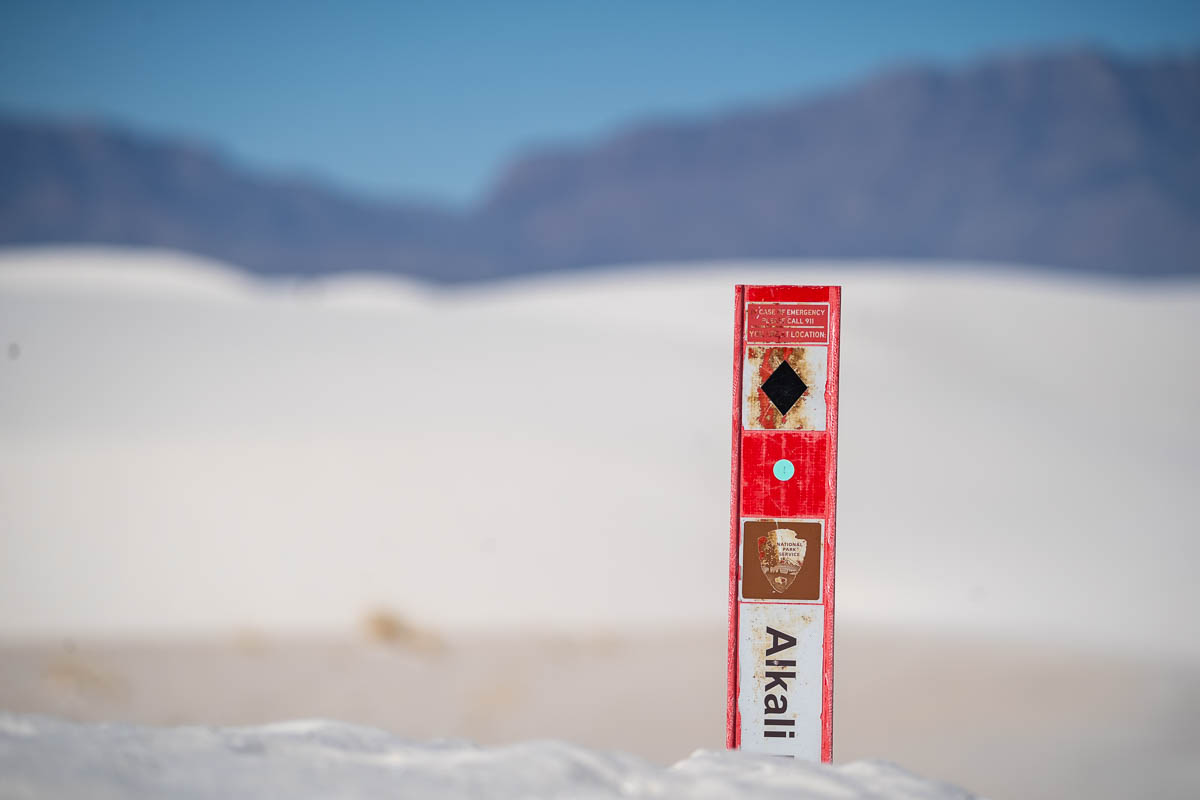
Instead, you’ll follow markers, which are about 300 feet apart and marked with reflective tape. Most of the time, the markers are quite easy to see, but there’s a few instances where the markers are tipping over or almost totally covered in sand and can be a bit more difficult to follow.
Accordingly, I’d recommend downloading a trail map on AllTrails ahead of time. My husband, Justin, and I had a hard time finding a few of the markers and were incredibly happy we could follow along our path using GPS on the trail map!
For the next two miles, you’ll follow a series of sand dunes up and down, with a decent amount of level stretches along the way. Besides the San Andres Mountains to the west, all you can see, in every direction, is pure white dunes, which have less and less footprints the further back you go.
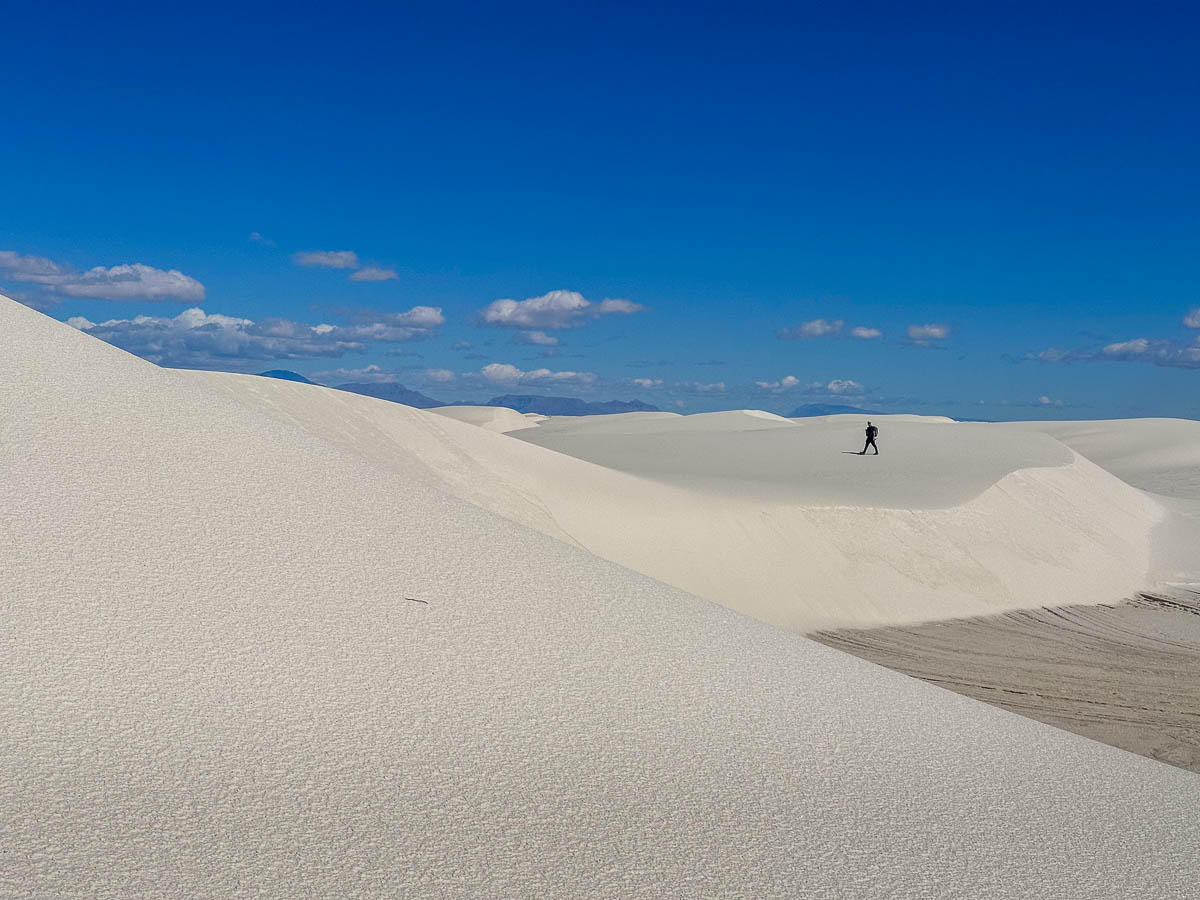
The sand here is quite soft, making even moderate inclines feel much more challenging to climb up than they otherwise would be. On the bright side, going downhill is an absolute blast—it feels like you’re running through marshmallow fluff!
Eventually, you’ll reach the trail’s namesake, the Alkali Flat, a 20-mile flat stretch of an ancient dry lake bed.
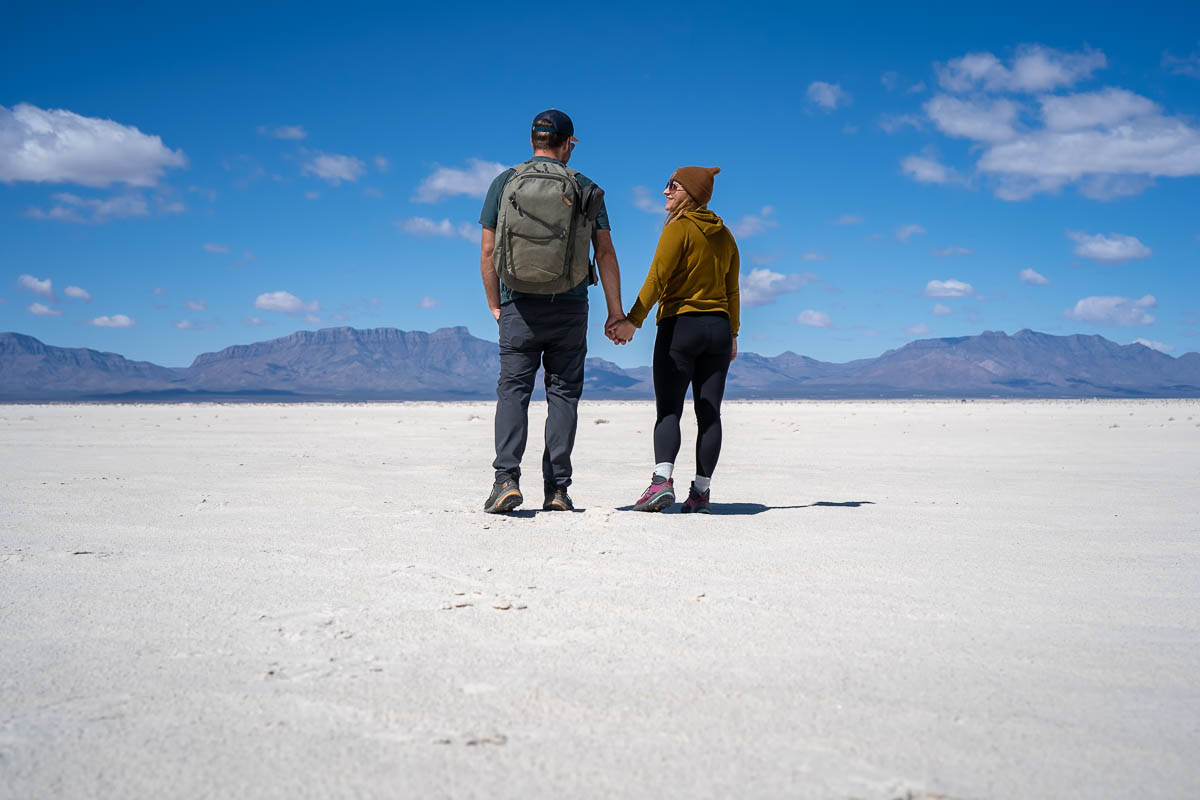
After about 0.4 miles of walking on the hardened white ground, the trail will again return to the dunes, looping up and over their hills, towards the snowy peaks of the Sacramento Mountains, until you get back to the trailhead.
When to hike the Alkali Flat Trail
The best time to hike the Alkali Flat Trail is in the cooler months, generally from October through April, when the temperature is pleasant for hiking. In the winter months (December through February), you may have to bundle up a bit, though—the daily highs are typically in the 50s and it frequently drops below freezing at nighttime and in the early morning.
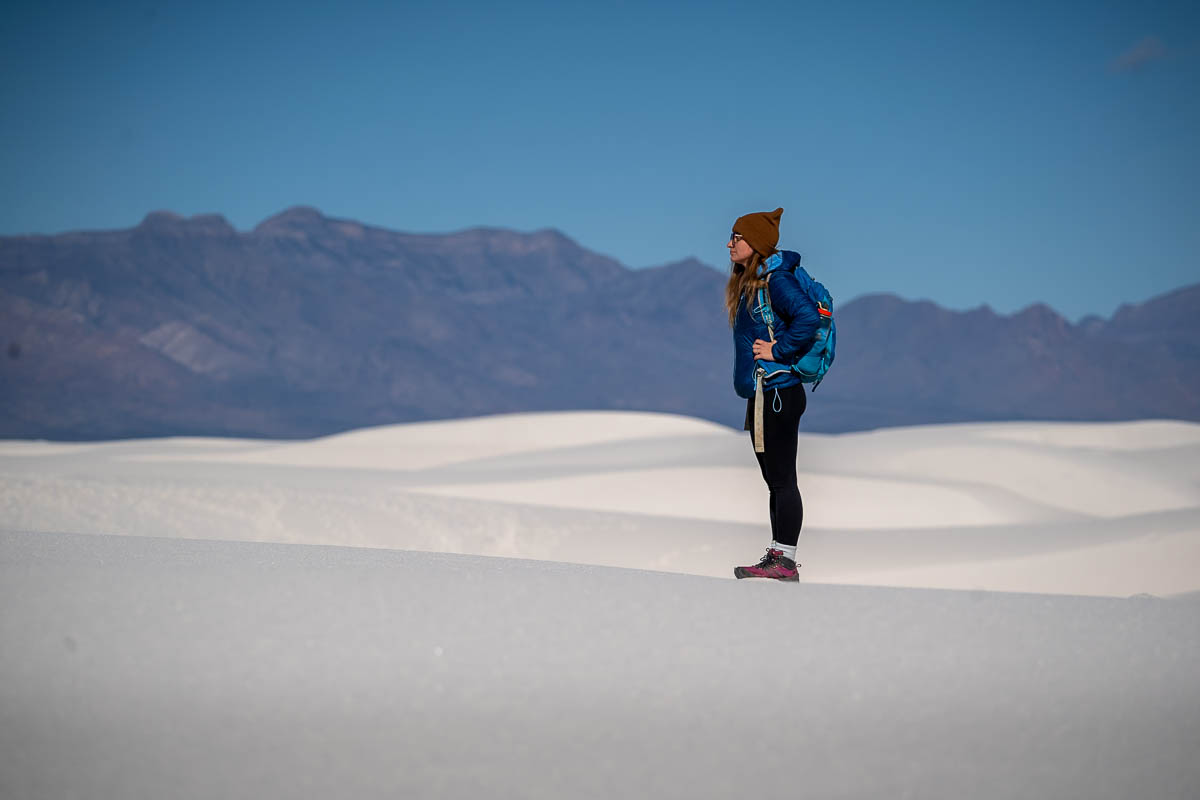
In the warmer months, it’s not uncommon for the temperature to exceed 100 degrees. So hiking for miles and miles on the Alkali Flat Trail can be potentially dangerous, especially given how limited its shade is, how easy it is to get turned around, and how few people can be on it. If you visit in the summertime, I’d strongly recommend starting as early as possible to beat the heat and bringing way more water with you than you think you need.
Tips for the Alkali Flat Trail
Bring sunglasses
Perhaps, unsurprisingly, this park can be a bright place, with the incredibly white sand reflecting light in pretty much every direction you look.
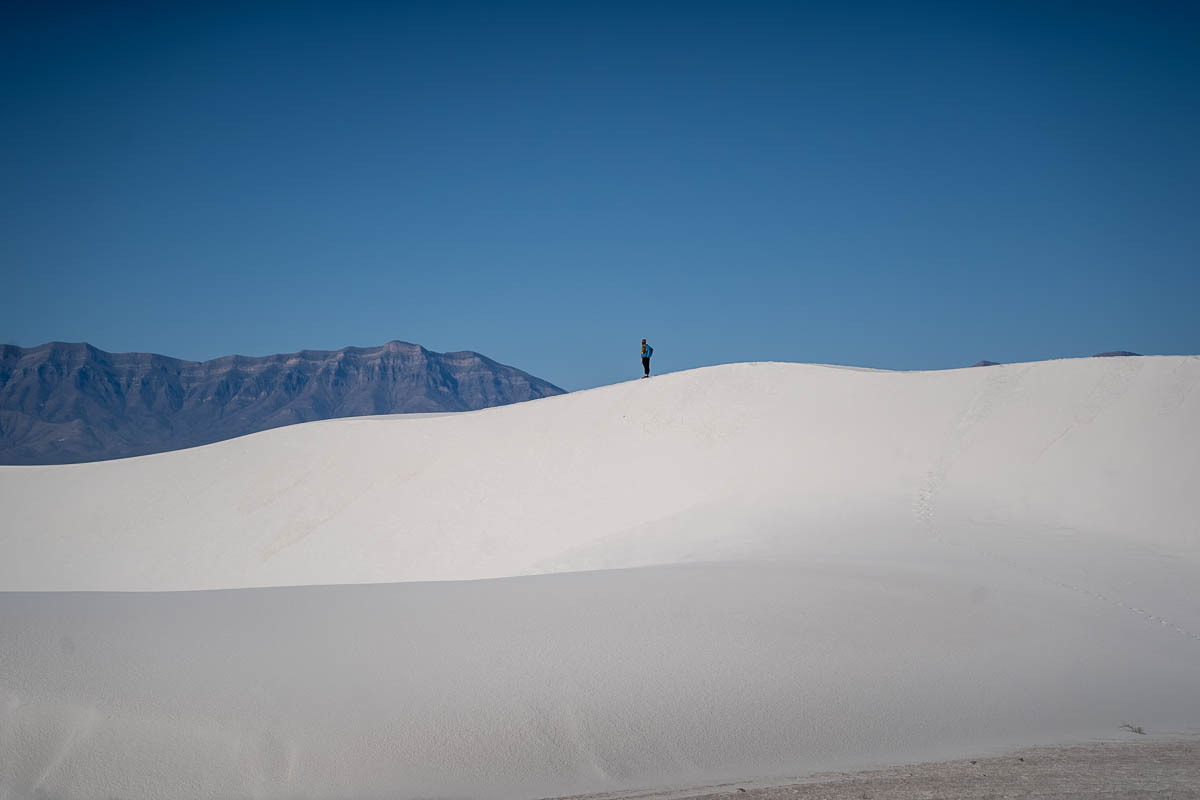
I’d strongly recommend packing sunglasses and a baseball hat to cut down on the intense light here—Justin and I were wearing both and still thought it was still almost blindingly white.
And don’t forget to slather on that sunscreen!
Wear hiking sandals
Because of its length, Justin and I opted to wear hiking boots. It turns out this was a huge mistake—we were constantly needing to take off our boots to shake out the sand spilling into them.
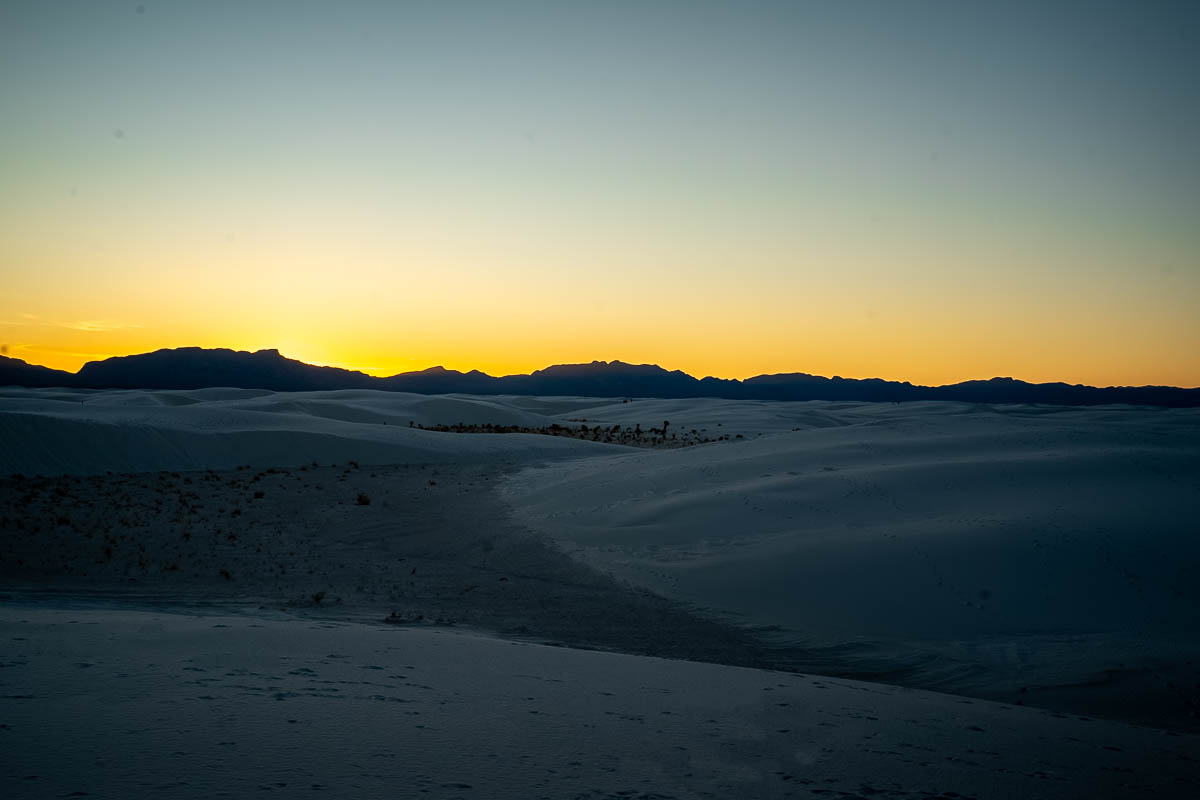
Instead, I’d suggest wearing hiking sandals,, which offer some support but won’t get quite as sandy as hiking boots. Plus, unlike silica, gypsum doesn’t absorb heat from the sun, so even on the sunniest, hottest days, the sand will feel nice and cool on your feet.
I wear this pair of Tevas 99% of the time, and this is the pair that Justin wears.
Enjoy the Alkali Flats Trail—it’s one of the most unique hikes we’ve experienced! Do you have any questions about this trail? Let us know in the comments below!

